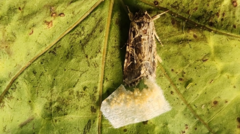A Tel Aviv University study finds that female moths avoid egg-laying on distressed tomato plants based on inaudible sounds, hinting at a potential interspecies communication between plants and animals.
Groundbreaking Study Reveals Plants May Communicate Through Sound to Affect Animal Behavior

Groundbreaking Study Reveals Plants May Communicate Through Sound to Affect Animal Behavior
New research indicates that animals, particularly moths, may respond to sounds produced by stressed plants, suggesting an intricate communication network within ecosystems.
In a striking revelation from researchers at Tel Aviv University, evidence has emerged that animals may be responding to sounds generated by plants under distress. This groundbreaking study opens up a new dimension to our understanding of ecological interactions, suggesting that a complex unseen ecosystem may thrive beneath our eyes.
The team’s research indicates that female moths, which typically lay eggs on healthy tomato plants, consciously avoided ovipositing on those that emitted sounds associated with stress. This fascinating behavior aligns with earlier findings by the same group, which noted that plants produce distressed sounds that escape the detectable range of human hearing but can be picked up by insects, bats, and certain mammals.
“Our study marks the first instance showing that an animal reacts to the auditory signals made by a plant,” said Prof Yossi Yovel of Tel Aviv University. He emphasized how this discovery raises intriguing questions about the range of animal behaviors influenced by plant sounds, including decisions regarding pollination or foraging.
In the meticulously conducted experiments, researchers sought to isolate the sound factor, ensuring it was the audible distress signals and not the physical characteristics of the plants that influenced the moths' decisions. Moving forward, the researchers aim to explore the various sounds that different plant species produce and investigate whether these auditory cues inform the behaviors of other animals in their ecosystems.
Additionally, Prof Lilach Hadany, also from Tel Aviv University, noted a potential avenue for research: whether plants can communicate with one another through sound to adapt behaviors, such as water conservation during droughts. “This poses a thrilling inquiry regarding plants' capability to relay information about stress to fellow plants in their vicinity,” she stated.
Despite the remarkable implications of this study, the researchers maintain that plants are not sentient beings. The sounds are produced through physical consequences from changes in their environment. However, the findings do imply that the capacity for sound production and perception could represent a co-evolutionary mechanism benefiting both flora and fauna.
The researchers highlighted that the nuanced relationship between plants and animals may lead to evolutionary changes, with plants potentially evolving to produce more prominent or varied sounds and animals adapting to better interpret these signals. “This is an enormous, largely uncharted area in ecology, ripe for exploration,” they concluded, hinting at potential future breakthroughs.
The study, which centers on the behaviors of moths selecting egg-laying sites based on auditory stress signals from tomato plants, was published in the respected journal eLife, and sets the stage for a deeper understanding of the connections in our natural world.
The team’s research indicates that female moths, which typically lay eggs on healthy tomato plants, consciously avoided ovipositing on those that emitted sounds associated with stress. This fascinating behavior aligns with earlier findings by the same group, which noted that plants produce distressed sounds that escape the detectable range of human hearing but can be picked up by insects, bats, and certain mammals.
“Our study marks the first instance showing that an animal reacts to the auditory signals made by a plant,” said Prof Yossi Yovel of Tel Aviv University. He emphasized how this discovery raises intriguing questions about the range of animal behaviors influenced by plant sounds, including decisions regarding pollination or foraging.
In the meticulously conducted experiments, researchers sought to isolate the sound factor, ensuring it was the audible distress signals and not the physical characteristics of the plants that influenced the moths' decisions. Moving forward, the researchers aim to explore the various sounds that different plant species produce and investigate whether these auditory cues inform the behaviors of other animals in their ecosystems.
Additionally, Prof Lilach Hadany, also from Tel Aviv University, noted a potential avenue for research: whether plants can communicate with one another through sound to adapt behaviors, such as water conservation during droughts. “This poses a thrilling inquiry regarding plants' capability to relay information about stress to fellow plants in their vicinity,” she stated.
Despite the remarkable implications of this study, the researchers maintain that plants are not sentient beings. The sounds are produced through physical consequences from changes in their environment. However, the findings do imply that the capacity for sound production and perception could represent a co-evolutionary mechanism benefiting both flora and fauna.
The researchers highlighted that the nuanced relationship between plants and animals may lead to evolutionary changes, with plants potentially evolving to produce more prominent or varied sounds and animals adapting to better interpret these signals. “This is an enormous, largely uncharted area in ecology, ripe for exploration,” they concluded, hinting at potential future breakthroughs.
The study, which centers on the behaviors of moths selecting egg-laying sites based on auditory stress signals from tomato plants, was published in the respected journal eLife, and sets the stage for a deeper understanding of the connections in our natural world.




















